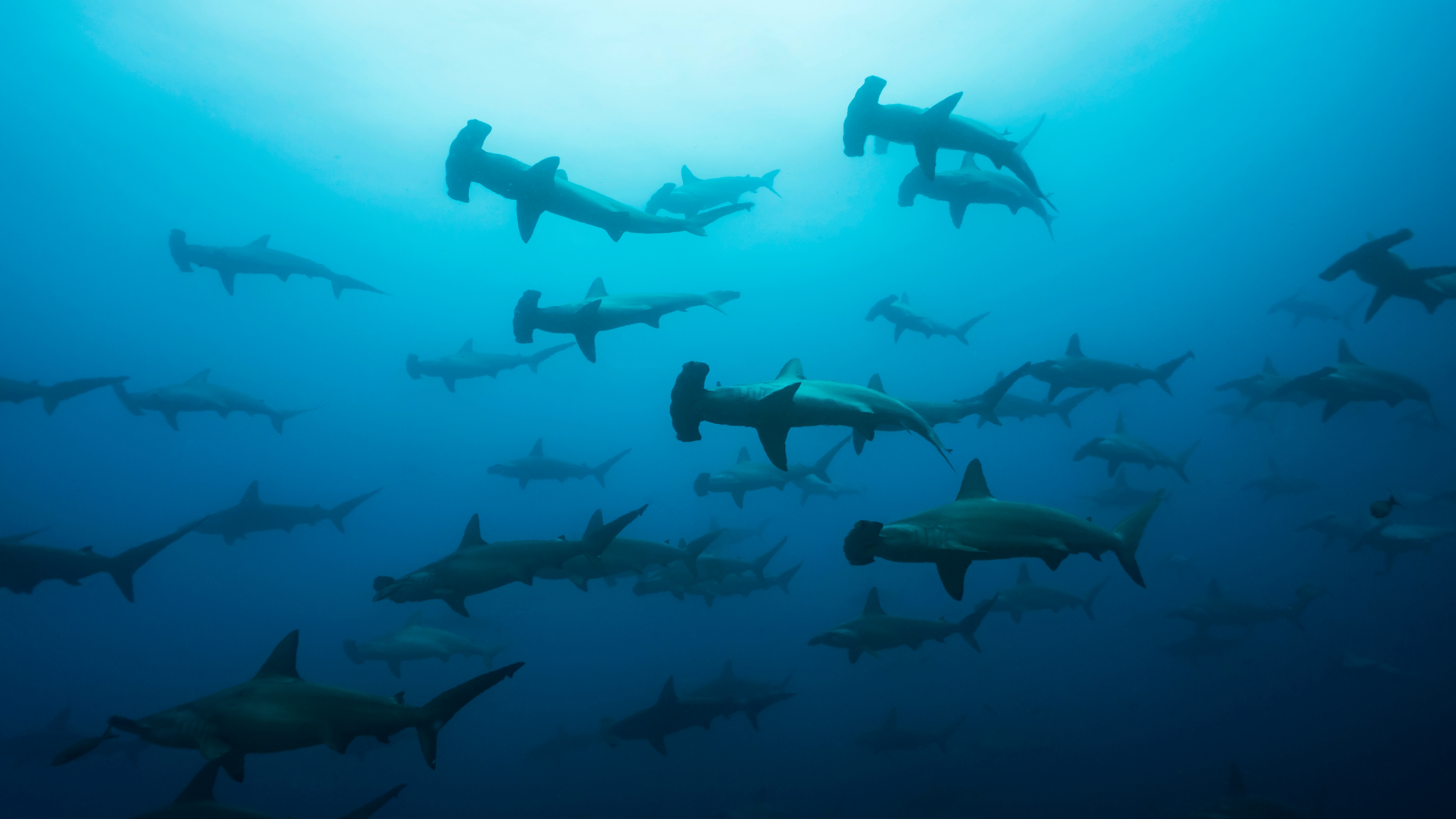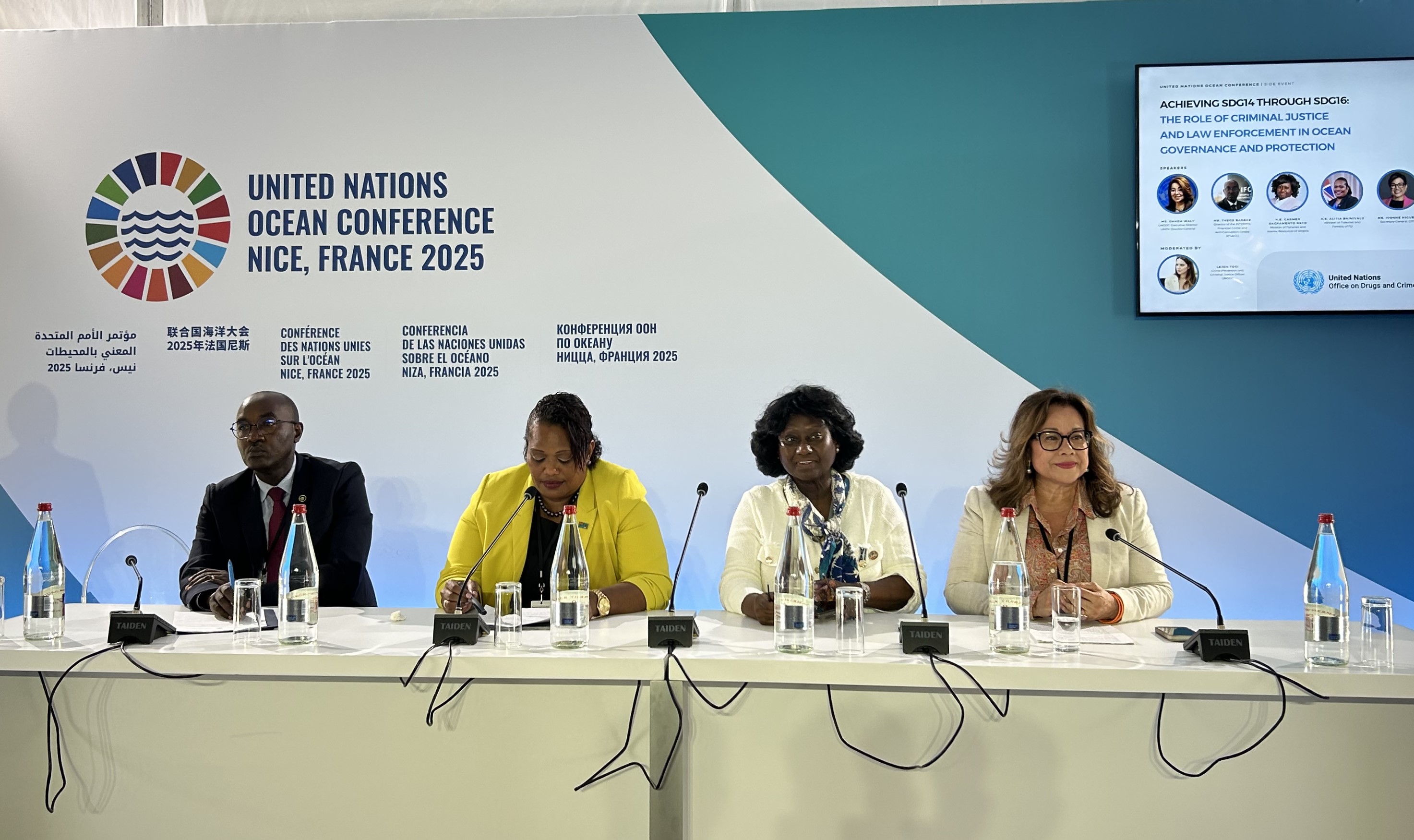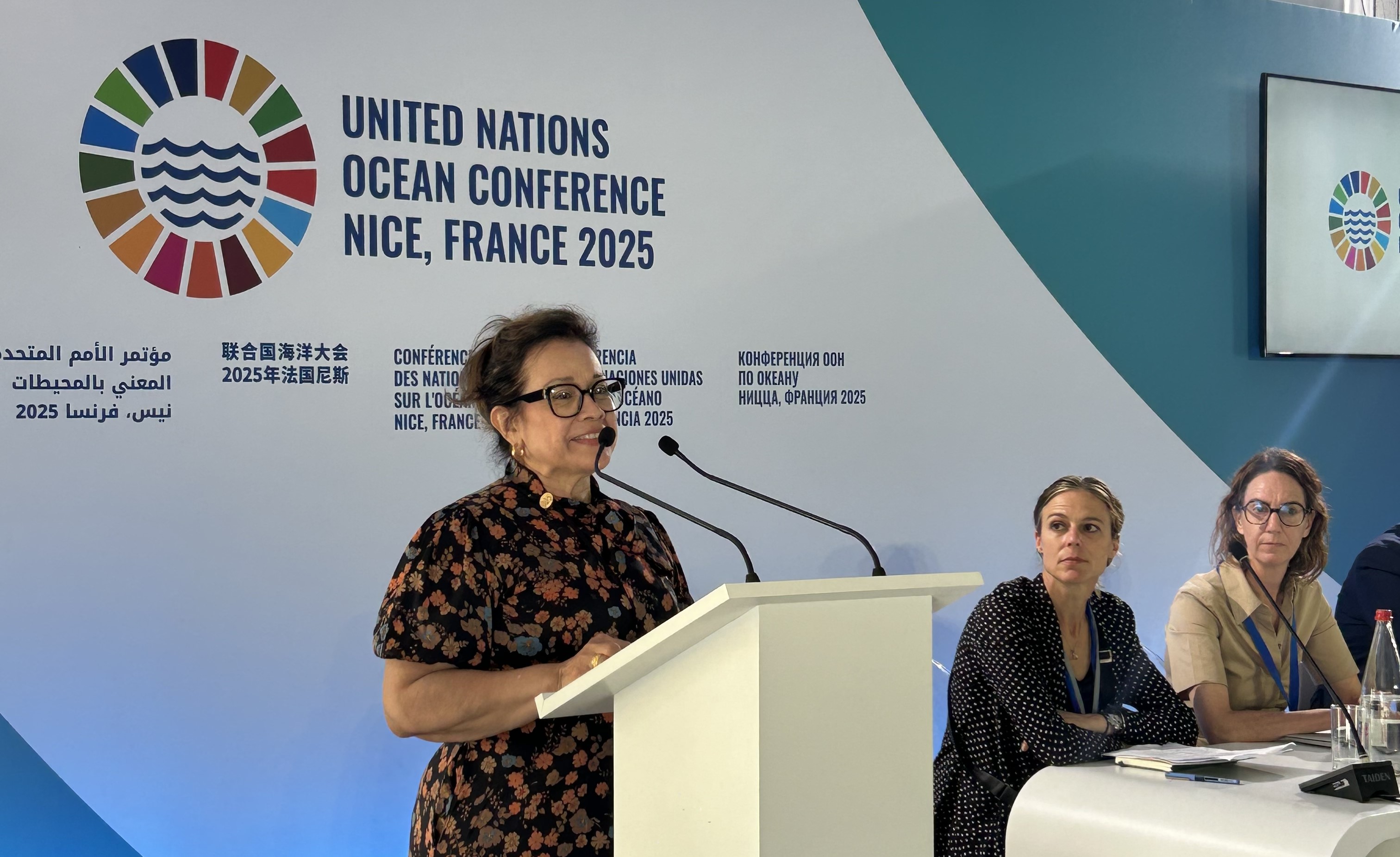
Nice, 10 July 2025 – The sustainable management of marine species remains one of the most pressing challenges in global ocean governance. Over 2,000 marine species are listed in the Appendices of the Convention on International Trade in Endangered Species of Wild Fauna and Flora (CITES), including cetaceans, sharks and rays, marine turtles, coral species, sea cucumbers, and seahorses.
Illegal, unmonitored and unregulated international trade can place significant pressure on marine biodiversity already facing threats related to the triple planetary crisis of climate change, pollution and biodiversity loss, among others. Ensuring that international trade in these species is legal, sustainable and traceable is essential to halting biodiversity loss, maintaining the health of ocean ecosystems and, in many cases, preserving the livelihoods of coastal communities.
Global commitment to people, the planet and the ocean resounded across the world last month as the third United Nations Ocean Conference (UNOC-3) concluded on 13 June in Nice, France. The Conference renewed global momentum toward the conservation and sustainable use of the ocean and marine biodiversity. The conference brought together Heads of State and Government, ministers, UN agencies, international organizations, civil society, and scientific experts to assess progress and mobilize action towards Sustainable Development Goal 14 (SDG 14): Life Below Water.
The CITES Secretariat actively contributed to discussions and events at UNOC-3, reaffirming the Convention’s vital role in ensuring the sustainable management of CITES-listed marine species conserving marine biodiversity, supporting sustainable livelihoods, and achieving the broader 2030 Agenda for Sustainable Development.
Throughout the conference, CITES Secretary-General Ivonne Higuero participated in high-level and technical dialogues, where she underscored the Convention’s role in advancing ocean sustainability through legal, sustainable, and traceable trade in marine wildlife.
In her written statement for Ocean Action Panel 6: Advancing sustainable ocean-based economies, sustainable maritime transport and coastal community resilience leaving no one behind, the Secretary-General emphasized that with an increased number of marine species listed in CITES Appendices, there is a need for additional scientific knowledge and expertise to be generated, and technical tools will be further developed, thus providing an important contribution to the sustainability of ocean-based economic sectors and the achievement of SDG14.

At the High-level side event on Achieving SDG14 Through SDG16: The Role of Criminal Justice and Law Enforcement in Ocean Governance and Protection, Secretary-General Higuero stressed that effective ocean conservation requires advancing rule of law and institutional capacity. She cited successful interagency efforts under the International Consortium on Combating Wildlife Crime (ICCWC), notably in totoaba trafficking, stating:
“As CITES marks 50 years since its entry into force this year, its role in promoting sustainable use and conservation of marine biodiversity remains more relevant than ever... in order to make real progress in ocean conservation, we must also advance justice, rule of law, and institutional capacity.”
Multilateral and cross-sectoral coordination were recurring themes throughout CITES engagement at UNOC-3. During the high-level segment of UN-Oceans side event on UN-Oceans as a mechanism to mobilize multilateral ocean action and amplify collective impacts toward the implementation of SDG14, the Secretary-General emphasized the value of interagency mechanisms like UN-Oceans for aligning efforts on marine issues. She noted that successful CITES implementation requires close cooperation between environmental, fisheries, customs, and enforcement authorities.
The Secretariat further reinforced marine biodiversity as a pillar of ocean sustainability and partnerships with fellow multilateral environmental agreements (MEAs) in marine wildlife conservation at the side event on the Conservation of Marine Animal Species for Healthy Ecosystems and Long-term Ocean Sustainability. Secretary-General Higuero recalled the growing number of marine species in the CITES Appendices and explained the importance of provisions like Introduction from the Sea, which refers to the regulation of trade from areas beyond national jurisdiction, and leveraging synergies with the goals of the Agreement on Marine Biological Diversity of Areas beyond National Jurisdiction (BBNJ Agreement).

At the Global Meeting of the Regional Seas Conventions and Action Plans, Secretary-General Higuero shared CITES support for the updated Regional Seas Strategic Directions and emphasized the importance of cooperation between the Regional Seas and global MEAs in achieving ocean-related goals and effectively supporting Member States.
The Secretariat then participated in the Launch of the Global Coalition to Halt the Extinction of Sharks and Rays, where the Secretary-General applauded the efforts of all stakeholders to ensure the survival of sharks and rays in well-functioning habitats and reaffirmed the Secretariat’s commitment to supporting Parties in implementing CITES provisions for these marine species.
Secretary-General Higuero also joined the High-level Breakfast on the Kunming-Montreal Global Biodiversity Framework (KMGBF) to exchange views and experiences on the progress made in KMGBF implementation and identify means by which various processes can best support the achievement of our common goals for the ocean.
Ocean conservation, sustainable trade, and international cooperation remain deeply interconnected priorities of the Convention which celebrates this year its 50th year since entry into force on 1 July 1975. The CITES Secretariat’s active role at UNOC-3 marks another important steppingstone on the road the upcoming 20th meeting of the Conference of the Parties (CITES CoP20) to take place in Samarkand, Uzbekistan, from 24 November-5 December 2025. Marine issues are expected to be on the CoP20 agenda, with anticipated discussions on new species listings and the advancement of traceability and enforcement mechanisms for marine trade.
____________________
Editor’s Notes:
For media enquiries, please contact cites-media@un.org
For general enquiries, please contact info@cites.org
About CITES
The Convention on International Trade in Endangered Species of Wild Fauna and Flora (CITES) was signed on 3 March 1973 and entered into force on 1 July 1975. With 185 Parties (184 countries + the European Union), it remains one of the world's most powerful tools for wildlife conservation through the regulation of international trade in over 40,900 species of wild animals and plants. CITES-listed species are used by people around the world in their daily lives for food, health care, furniture, housing, tourist souvenirs, cosmetics or fashion. CITES seeks to ensure that international trade in such species is sustainable, legal and traceable and contributes to both the livelihoods of the communities that live closest to them and to national economies for a healthy planet and the prosperity of the people in support of UN Sustainable Development Goals.
Follow CITES on social media:
Find out more: https://cites.org/eng